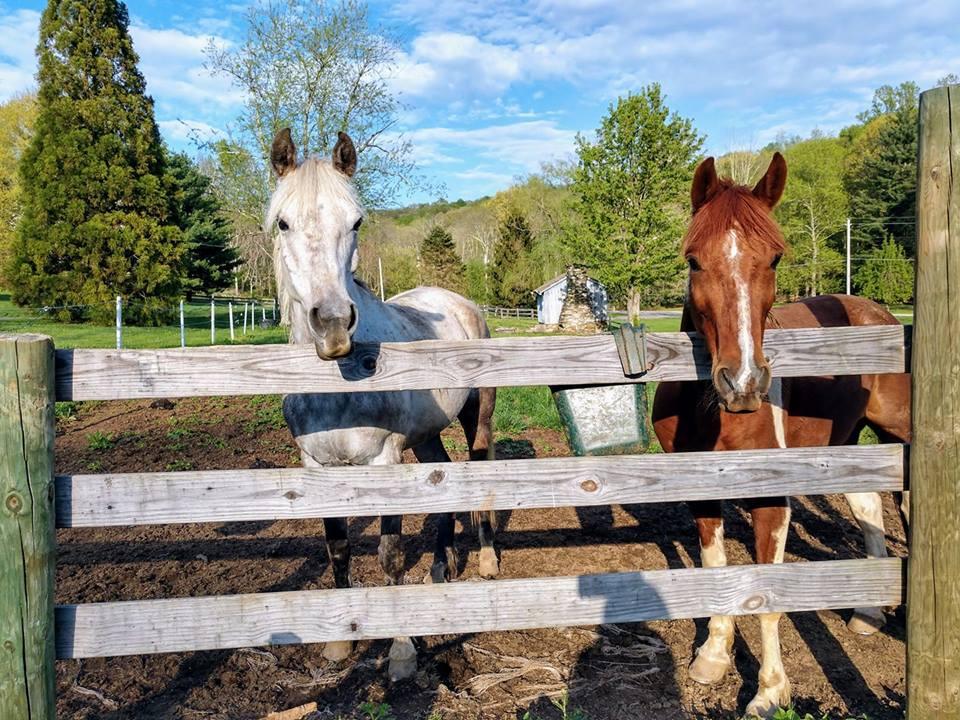
Going the Distance: Training For 100 Miles
A hundred-mile endurance race is no small feat: how does one train and condition for such a ride? Biz Stamm chats with our featured endurance pair Angela Gross Kemerer and her horse Shae as they prepare for the Vermont 100.
If you missed our first article, we here at Horse Nation are following Angela Gross Kemerer and her Arabian mare Shae as they prepare to compete in the Vermont 100 endurance ride. A hundred miles is a long way to ride, and going the distance (Hey! That’s the name of the series!) successfully requires boat loads of training and preparation. So just how does one go about preparing themselves and their horse for such an epic feat of endurance?
Scheduling Rest
When I asked Angela, she started off by emphasizing that properly scheduled rest is just as important as properly scheduled training. As a general rule, endurance horses are given one week off after a 25 mile, two weeks off after a 50 mile ride, three weeks off after a 75 mile ride, and four weeks off after a 100 mile ride. As a result, endurance horses spend most of their time during competition seasons resting between rides.
Because of the high demand for rest during competition season, it is important to get your horse fit prior to the first race of the year. Angela assured me that Shae is feeling incredibly fit this year and the results from their recent rides reflect the diligent conditioning completed prior to competition season. Since April, they have completed two 50 mile rides as well as a 30 mile ride at which they won the coveted best conditioned award, given to the horse with the best vet score combined with the best time/weight carried, as well as the high vet score award given to the horse with the best vet score overall.
So what exactly was it that Angela did leading up to competition season that got Shae so incredibly fit?
Pre-season conditioning rides
The months leading up to competition season is when the majority of the conditioning work takes place. Similar to the training schedule of a long distance runner, Angela takes Shae on three or four shorter training rides per week (10-15 miles), and one long ride on the weekend (20+ miles). She tries to include variety in the shorter rides, with some being short and fast, others focusing on hill work, and some including speed interval training.
While long, slow rides are vital to preparing the horse’s body to endure concussion and physical exertion over long periods of time, high intensity short rides are equally integral to building endurance over distance. Speaking from personal experience as a long distance runner, it is much more common to struggle due to muscle fatigue over the course of a race than it is to find yourself out of breath. These shorter high intensity rides allow for horses to condition their muscles in such a way that they fatigue less quickly when traveling longer distances at a lower intensity.
Cross-training
While Angela mostly keeps Shae fit out on the trails, she keeps her eventing mounts fit utilizing endurance-style conditioning plans. In the future, however, she hopes to introduce Shae to jumping. Shae loves hopping over logs on the trail and Angela thinks she may really shine in the jumper ring. The added hind end strength certainly wouldn’t hurt when charging up those hills!
Rider Fitness
Despite the fact that so many are quick to say that riding isn’t a sport, we all know better. Spending hours at a time in the saddle requires a great deal of athleticism. The fitter a rider is, the better they are able to support their horse over the course of a ride. While Angela stays very fit with the sheer amount of time she spends in the saddle, she supplements her own fitness by running. She finds that training for races in the 5k to half-marathon range really helps her keep her in peak form.
I hope following this amazing pair is inspiring some of you out there to take the plunge into the world of endurance riding. Before embarking on your own horse’s endurance training program, be sure to consult with an expert who can provide you with the guidance needed to keep both you and your horse healthy and sound. To find a mentor near you, check out the American Endurance Rider Conference (AERC) regional directory. Look for us next time when we’ll go over the essential gear that endurance riders can’t go without!
Go riding!









Leave a Comment